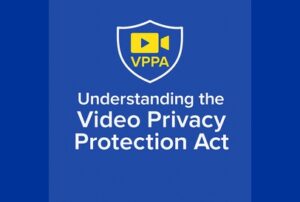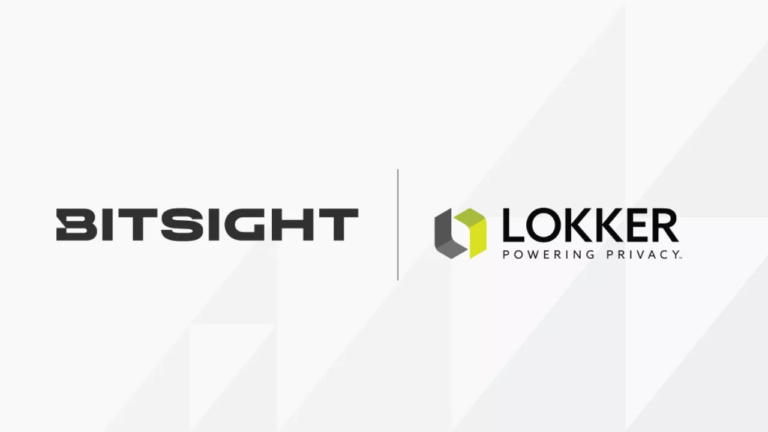Implementing proper data privacy practices isn’t just a legal requirement–it’s also an opportunity to build more trust with customers.
As the amount of data collected from everyday browsing sessions increases, so do the concerns around the privacy and governance of this information. The result is increasingly strict and expansive regulations that businesses need to know, understand, and comply with, including GDPR, CCPA, HIPAA, and more.
Your site may have third-party trackers that pose privacy risks, even if you’re not aware of them. These trackers, which share data with unauthorized third parties, can potentially expose sensitive user data and open your business up to compliance violations.
You need data privacy software that caters to your business’s unique needs to minimize liability and ensure you’re safeguarding your user data.
We’ve reviewed some of the best data privacy tools to help you select the option that’s right for you.
The Top 8 Data Privacy Tools to Consider
The best data privacy tool for your organization depends on your existing systems, the type of data your website captures, and restrictions such as budget or company size. You might need something to supplement the gaps in your existing consent management solution or you may require a comprehensive privacy solution that handles all aspects of data privacy reporting and governance.
Our top eight data privacy tools cover a variety of features and pricing models. Find the right fit to tackle your unique challenges, protect users, and achieve compliance.
1. LOKKER
LOKKER provides online data privacy and compliance solutions for enterprises, focusing on identifying and automatically blocking unauthorized data sharing across the web.
The LOKKER Privacy Edge™ platform delivers dynamic, risk-based protection tailored to the rapidly evolving regulatory and threat landscape. It offers real-time detection, analysis, and prevention of data sharing risks.
LOKKER scans your website to identify every third-party script, confirming what data they access and whether they are intentional or piggybacking. Users receive a comprehensive list of all tags, trackers, cookies, pixels, their countries of origin, payload data, and lineage. Real-time alerts highlight critical privacy events, such as geographic risks, piggybackers, payloads with health data or PII, browser fingerprinting, consent management failures, and unauthorized cookies dropped on page load.
LOKKER then automatically blocks data collection from sources outside your trusted third-party partners in real-time, ensuring compliance with privacy laws and regulations.
Together, LOKKER’s tools help enforce your site’s consent settings and privacy policy by quickly identifying and resolving critical privacy issues, offering an easy-to-understand overview so you can prioritize fixes.
Features
- Easy-to-read dashboard overviews of privacy risks with severity ratings for prioritization
- Real-time alerts to prevent critical privacy events from escalating
- Browser-level blocking to protect users automatically
- Blocking of risks at organization, site, and URL level
- Geolocation or platform-based blocking rules
- Threat visualization and mapping that connects them to the source
- Actionable reports to provide quick insight to decision-makers
- Consent verification to make sure your consent tools are functioning compliantly
- Consent management banners and tools that work with Privacy Edge automated blocking
2. Enzuzo
Enzuzo offers data privacy compliance software that intends to operate as an all-in-one, standalone option for small to medium businesses looking to become compliant quickly. They claim that the tool only requires a few minutes of setup and pride themselves on being user-friendly, making them a starter option to consider.
Enzuzo’s suite of products provides consent management tools, including customizable cookie banners that allow users to control what data they share. It also lets users make data subject access requests (DSARs) to adjust their consent settings and protect existing data accessibility.
Other features include a policy generator that works for privacy, shipping, and return policies, as well as terms of service to ensure you cover your liability effectively for new sites or data privacy improvement efforts. Enzuzo’s compliance dashboards give you an overview of issues to help you prioritize which to fix first and identify vendor risks to prevent data leaks.
Enzuzo users have reported that their customization options are limited, especially when building consent banners. Getting the most out of the software’s features and staying on top of compliance issues that arise also requires more internal resources than users expected.
Pros
- Consent banner tools to ensure you collect consent
- Policy generator to get you started quickly
- Dashboard of threats with ratings for prioritization
- Consent management and DSAR handling
Cons
- Limited customization options for advanced users
- Greater resource demands for using the full feature list
3. OneTrust
OneTrust provides end-to-end data management spanning data security, privacy, and governance to help organizations navigate global regulations and users control their data sharing. It’s a complete compliance and risk management platform that’s robust, customizable, and complicated.
OneTrust features a deep list of functions and tools for controlling consent, protecting sensitive data during transmission and storage, and identifying weak points like third-party programs that access user data. You can create consent banners, allow users to make Data Subject Access Requests automatically, and track the flow of data through data mapping visualization.
For companies leveraging AI in their workflows, OneTrust helps simplify compliance and ethical obligations around AI governance while identifying risks with in-house and local AI systems. It also uses automation tools to identify and track vulnerabilities so you can extract more insight in less time.
OneTrust is also flexible, integrating with a variety of platforms and existing tech stacks to add high-level data management to any existing site or platform–if you have the time and resources to make it work.
As one of the most complete platforms available, OneTrust comes with a price tag and level of complexity to match. Users cite expensive pricing and difficulty both getting started with the platform and managing it as potential cons that limit its usability for smaller businesses.
Pros
- Automated risk assessment and management
- Consent and permissions management, including automated DSARs
- Specific tools for organizations leveraging AI
- Works with a wide range of tools and systems
Cons
- Cost-prohibitive for smaller businesses
- Complex and difficult to use without dedicated teams
- Some performance issues associated with integrating large databases
4. Bitsight
Bitsight is a cyber risk management solution provider that helps businesses and organizations control their and their third-party affiliates’ data security risks. Their goal is to help reduce the risk and impact of attacks on security and improve user trust.
Bitsight helps identify and evaluate cyber risks throughout your entire supply chain, including vendors, third parties, and fourth parties. It provides you with a security score that reflects how well-protected you are while making recommendations for improvements and, in some cases, giving you the tools to improve them.
The platform also evaluates your third-party connections to help you solidify the security of your ecosystem by severing ties or working with them to make improvements. You can send vulnerability questionnaires at scale to ensure they’re working to protect your security as well as their own.
Bitsight users have mentioned that vendors may not recognize or comply with the ratings and recommendations Bitsight provides because of a lack of context behind the concerns. Some users with a number of connections to monitor also mention pricing is high based on their licensing system.
Pros
- Monitoring for first, third, and fourth parties
- Quantified security score to help evaluate your own and vendors’ security
- At-a-glance risk discovery, assessment, and resolution
- Tools for communicating with vendors to resolve vulnerabilities
Cons
- Lack of context for certain concerns relating to vendors
- High cost for larger networks of affiliates
- Intermittent delay in reporting vulnerabilities
5. Freshpaint
Freshpaint is a data privacy platform that’s built specifically for the healthcare field. It assumes a unique role in data privacy for healthcare organizations who have to be extremely careful about digital private health information (ePHI).
Trackers and other marketing tools aren’t HIPAA-compliant by default, making it nearly impossible for users to access your site’s full functionality. This also means that you can’t utilize individual user identifiers and data, including simple information like IP addresses or device IDs, in your advertising and analytics.
Freshpaint takes on the difficult task of enabling HIPAA-compliant advertising by making users pseudo-anonymous. This allows you to still use non-sensitive data without revealing personal health data. It steps in between your site and these third parties, compliantly storing all of the information that’s collected and restricting what data gets passed onto other tools.
With Freshpaint, all data sharing is blocked by default to help avoid violations. From its default state, you can choose which data to share and which tools can access it. The data is then de-identified from the user and added to an anonymous ID that can be tracked without linking back to any identifiable information.
In addition to being limited to primarily healthcare organizations, Freshpaint lacks real-time vulnerability and violation tracking and remediation abilities. It’s more of a proactive tool for enabling integration with advertising tools than a tool for resolving existing vulnerabilities like most others on this list.
Pros
- Anonymizes users on healthcare sites to enable advertising and tracking without identifiers
- Prevents violations by blocking all trackers by default
- Easily integrates with your other tools after setup
Cons
- Specifically built for healthcare organizations
- Doesn’t enable third-party connections
6. Osano
Osano focuses on streamlining and simplifying data privacy management to comply with global regulations and build trust with users, employees, and stakeholders. Its platform is built for businesses of all sizes and encompasses most data collection, storage, and management needs.
Osano makes it easy to collect and manage consent through customizable, branded banners that update automatically based on changing regulations so you can stay compliant at all times. There’s also a unified consent dashboard where users can summarize, change, or revoke permissions at any time through DSARs, which team members can easily track through the Subject Rights Management dashboard.
Osano’s platform simplifies data mapping, identifying who has access to it and highlighting high-risk stores at a glance through visualization. It also enables easy vendor management, including creating compliant assessment workflows and evaluating their privacy risk across 163 criteria so you can protect users’ data by choosing security-focused third-party affiliates.
Users have mentioned that Osano is more expensive than similar solutions and lacks some detail in identifying and resolving specific issues that it highlights. Some say it’s hard to use at the beginning as well.
Pros
- Automatically updates consent banners based on regulations
- Universal consent management with DSAR handling
- Third-party evaluations and assessment tools
- ‘No Fines, No Penalties’ coverage of up to $200,000 when using the platform
Cons
- Somewhat expensive for small businesses
- Lack of detail for threats
- Generally requires assistance to get started
7. TrustArc
TrustArc provides privacy compliance and risk management solutions with an emphasis on automation, AI-integration, and cost savings. With their platform, you can ensure all user experiences are compliant and your data stays safe in trusted hands.
TrustArc’s PrivacyCentral Platform includes tools for creating and adding compliant cookie banners, controlling user opt-ins and opt-outs for special permissions, and handling DSARs so users always stay in control. They support over 100 jurisdictions globally and automatically sort the trackers into types to save you time while you remain compliant.
Their data mapping dashboard provides at-a-glance overviews of your privacy risks, both from your own site and through third parties, that risk regulatory fines and violations. If any critical risks are discovered, the platform’s privacy intelligence will recommend follow-up actions to take to protect your organization. From there, you can generate reports to share with stakeholders and the appropriate team members.
The main complaint that TrustArc users have is the user interface and depth of the information, which can be overwhelming for some users, especially those without technical experience. Plus, customer support can be inconsistent in speed and quality.
Pros
- Comprehensive consent management and DSAR handling
- The data mapping dashboard visualizes overall and individual risks
- Privacy intelligence tool recommends fixes and improvements
- Built-in assessment tools to onboard and improve third-party security
Cons
- The user interface can be complicated to use
- Customer service is hit or miss
8. Didomi
Didomi is a comprehensive privacy and consent management solution that enables users to control their consent and preferences while ensuring they comply with countless global regulations. It’s built to be very user-friendly and includes onboarding and dedicated support, making it great for businesses with fewer resources who need help getting started or keeping up with regulations.
Didomi’s consent management platform ensures you’re both achieving compliance and improving the end-user experience. It allows you to quickly and easily add consent banners to your site that adjust based on the user’s location and applicable regulations, as well as their screen size. Users can adjust their consent at any time through privacy request management tools and DSARs for transparency and to build trust.
Compliance monitoring features are also critical for data privacy, highlighting cookies and other trackers in real-time that create vulnerabilities in third-party sites or your own. The platform will analyze and evaluate your vendors’ trustworthiness to help you choose who to work with and use data mapping to track any vulnerabilities back to the source so you can work with them to resolve them.
Didomi users have complained about performance issues arising from the widgets used in their preference management platform, which doesn’t impact privacy. The data mapping feature also doesn’t detect or categorize new data, making it harder to find existing personal information. Finally, a lack of pricing means some customers are disappointed when Didomi’s solution isn’t within their budget.
Pros
- Dedicated support for consent management as new regulations come out
- Responsive geo-targeted consent banners you can customize
- Cross-device consent, including TVs and OTT apps
- Real-time vulnerability alerts
- Easy report generation and automated weekly updates
Cons
- Some widgets can impact performance
- Doesn’t automatically detect or categorize data
- No pricing information
What to Look for in a Data Privacy Tool
Data privacy tools come in a variety of types that are meant for specific use cases. Some are comprehensive solutions that you need to commit to if you want to use them. Others fill a unique role and can be easily integrated into your existing system or platform to extend your functionality.
The features to look for will depend on your specific needs and use case, but in our time researching dozens of options, we found a few core functionalities to look for–either individually or as part of a suite.
Here’s what to look for in your data privacy software:
- Consent Management: Managing consent is a core element of data privacy. Ensure your choice has the ability to capture appropriate consent based on the user’s location and tools to help users manage their own data through DSARs.
- Data Mapping and Discovery: Understanding how data flows and its accessibility helps you identify vulnerabilities and the source of risks, like third-party vendors. Look for tools offering visualization or granular tracking of trackers, as well as data discovery tools to ensure you’re removing vulnerabilities and safeguarding sensitive data.
- Real-Time Risk Evaluation: Data leaks and breaches can happen quickly, so the faster you respond, the easier it is to limit damage. Real-time updates allow you to get ahead of issues and fix them as soon as possible.
- Vendor Monitoring and Assessment: Vendors represent a huge risk to your data privacy. If they’re not taking proper security measures, their vulnerabilities become yours. Consider tools offering vendor evaluation dashboards, communication tools to help resolve issues, and assessments that ensure they’re working on their risk management.
- Data Visualization and Dashboards: Privacy management involves a lot of data that can be hard to process and gain insight from. For usability, many platforms offer dashboards that color-code information in dashboards so it’s easily digestible or create visualizations like charts or models to demonstrate data flow or the reach that trackers have on your site.
- Dedicated Customer Support: Many data privacy tools are high-tech or complicated to use, especially during onboarding. Dedicated support can make a huge difference in how well you can utilize the app, so consider customer service ratings before choosing.
- User-Friendly Interface: User-friendly tools make everyone’s lives easier. It’s especially important if you’re planning to have multiple team members accessing the platforms with varying levels of technical experience, helping you save time on training and reduce mistakes/
These are just a few of the features to look for, so consider what’s important to your organization before you make a choice based on them alone.
When Should You Look Into Getting a Data Privacy Tool?
Data privacy tools are essential for organizations that collect user data because you need to be certain you’re complying with all applicable laws and regulations. Without it, you risk fines, penalties, and legal repercussions.
Some cases where you would need a data privacy tool include:
- Launching a new website or online service that collects data
- Expanding to another region with specific regulations, like GDPR in Europe
- Adjusting to changes to existing regulations that impact your organization
- Scaling your data operations, leading to increased data volume and complexity
- Updating data collection procedure for your business or organization
- After mergers or other changes that impact policy and procedures like data collection
- Responding to data breaches caused by poor data management
- Spending too much of your team’s time handling data privacy manually
- Onboarding new vendors or partners
- Answering user demands for improved transparency in data collection and use
Generally, any business or organization that collects user data should consider a data privacy tool to ensure compliance and protect users.
Preparing for Privacy Compliance in 2024 and Beyond
As the data privacy landscape becomes more complex with evolving regulations and the application of old laws to new technologies, it’s crucial to have the right infrastructure to track changes, adapt practices, and protect growing volumes of user data.
Choosing the right data privacy software is essential for building this infrastructure. It gives you control over data security, safeguards user privacy, and helps avoid costly fines.
With the right tools, you can reduce compliance worries and focus on other critical tasks, thanks to automation and smart features that ease your team’s workload. Data privacy isn’t optional—it’s essential. By committing to ethical data practices with effective software, you create a safer online environment and protect your bottom line.








